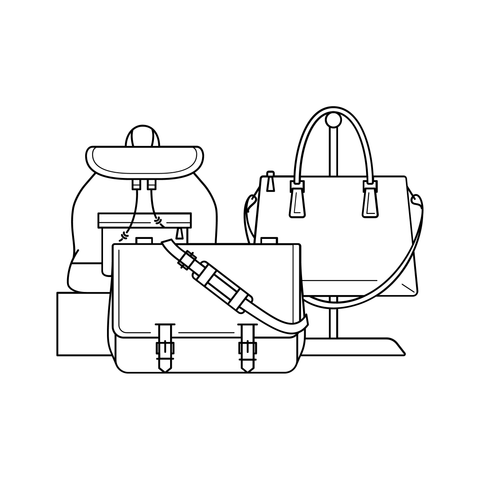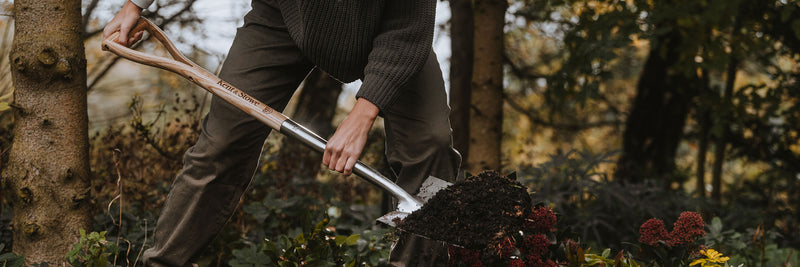As winter begins to loosen its grip, February is an important month for gardeners to get a head start on the growing season. With longer days and the promise of spring, there’s plenty to do to prepare your garden for the months ahead. Here are some essential gardening tasks to tackle this February.
Prepare Your Soil
Good soil preparation is key to a productive garden. Use this time to dig over borders with a robust digging spade like the Kent & Stowe Capability Digging Spade which has a confident 20 year guarantee. You can add a good mulch or bark which will help improve the soil structure and fertility to give your plants the best start. You can also use this time to remove any weeds. A great tool is an Oscillating Hoe which will easily sever weeds from underneath the soil surface.

Prune Trees and Shrubs
Late winter is the perfect time to prune dormant trees, shrubs, and hedges. Pruning during this time helps to shape plants, remove dead or diseased wood, and promote vigorous growth in the coming season. Focus on wisteria, fruit trees, and roses, as these plants benefit greatly from careful pruning to encourage healthy growth and abundant blooms. For wisteria, cut back lateral shoots to two or three buds - read our guide to find out more about how to prune wisteria. Remove any crossing or damaged branches on fruit trees to improve airflow and light penetration.
A Telescopic Tree Lopper is good for tall, hard-to-reach branches as it extends to up to 3m. For the shaping of smaller branches or shrubs, choose all purpose loppers for thicker branches and secateurs for thinner, smaller stems.

Tidy Borders & Beds
Clear away debris such as fallen leaves and spent plants from your borders using a shrub rake which will easily get in between plants. A hand fork is also ideal for gently loosening compacted soil around plants, making it easier to remove stubborn weeds and debris. This reduces the risk of pests and diseases while giving your garden a tidy appearance. Removing old plant material also makes room for new growth and allows you to identify areas that might need refreshing with new plants or mulch.

Start Seeds Indoors
February is a great time to start sowing seeds indoors for hardy annuals, such as sweet peas, and early vegetables like tomatoes and peppers. Starting seeds indoors gives them a head start in controlled conditions, ensuring healthy seedlings by the time they’re ready to be transplanted outside. Ensure your seedlings have plenty of light and warmth.
Use a dibber for creating holes in seed trays or fibre pots to place your seeds into. You can then transplant seedlings using a transplanting trowel or widger.
Find out what seeds to sow in February

Plant Bare Root Trees and Shrubs
Bare root plants, including roses and fruit trees, establish well when planted in late winter. Their roots grow quickly in the cool, moist soil, giving them a strong start before active growth begins in spring.
Dig a hole wide enough to spread the roots comfortably, backfill with soil, and water thoroughly to help settle the plant.

Protect Against Frost
Frost can still threaten tender plants in February. Cover vulnerable plants with horticultural fleece or cloches and add a layer of mulch to protect roots and retain moisture. Mulching not only insulates the soil but also helps suppress weeds, saving you work later in the season.

Houseplant Care
During the winter months, it’s important to adjust care for your houseplants. Most plants will require less watering, although Christmas cactus and poinsettia should be watered whenever the soil feels dry. To compensate for lower light levels, move your plants to brighter areas or opt for varieties that thrive in low-light conditions.
Dust can easily accumulate on the leaves of certain plants, such as snake plants, so give them a gentle wipe to keep them clean and healthy. Protect your plants from temperature extremes by avoiding placement near draughty windows or heating vents. Lastly, regularly inspect for common pests like aphids, scale insects, thrips, and mealybugs to catch any issues early.

Care for Wildlife
Support garden wildlife during the colder months by keeping bird feeders stocked and providing water. Clean feeders regularly to prevent the spread of disease, and consider installing nesting boxes for birds preparing for spring. Bug hotels and log piles can also provide shelter for beneficial insects like ladybirds and bees, which will help pollinate your plants and keep pests at bay.

Maintain Your Tools
Take time to clean, sharpen, and oil your garden tools. Well maintained tools not only last longer but also make gardening tasks easier and more efficient. Sharpening blades ensures cleaner cuts, which are better for your plants while removing rust extends the lifespan of your tools. A Tool Sharpener keeps blades in peak condition, saving you time and effort during gardening tasks.
Read our guide on how to care for your garden tools.











